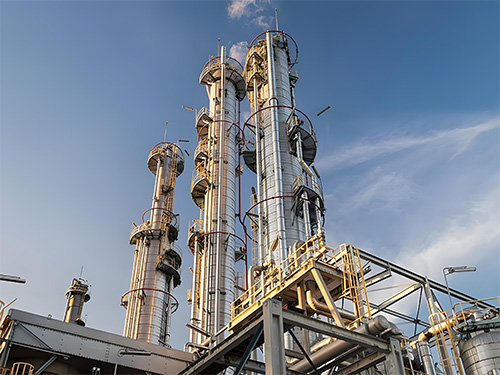
Hydrogenation equipment plays a crucial role in modern petrochemical, fertilizer production, and environmental sectors. It enhances product quality and reaction efficiency through hydrogenation reactions and is essential in many industrial processes. Understanding the working principle and key technologies of hydrogenation equipment helps optimize production processes and improve product quality. This article provides a detailed analysis of the working principle and key technologies of hydrogenation equipment, offering valuable insights for selecting and applying these systems.

I. Working Principle of Hydrogenation Equipment
Hydrogenation equipment introduces hydrogen into a reaction system under high temperature and pressure conditions. Here’s a breakdown of its basic operation:
Hydrogen Supply
Hydrogen is the primary reactant in hydrogenation. Equipment is typically equipped with hydrogen generation units or storage systems to supply the necessary hydrogen. The hydrogen is filtered and regulated to meet purity and pressure requirements for the reaction.
Reactor Heating
Hydrogenation reactions generally occur at high temperatures. Equipment includes heating systems to raise the reactor's temperature, using methods such as electric heating, steam heating, or other techniques to achieve the required reaction temperature.
High-Pressure Reaction
Hydrogenation often takes place under high pressure. Equipment includes high-pressure pumps and reactors designed to withstand high-pressure environments, ensuring thorough mixing and reaction of hydrogen with raw materials. Pressure control systems adjust the reaction pressure to maintain stability and safety.
Catalyst Action
Catalysts are crucial in hydrogenation reactions. Equipment typically features catalyst beds or reactors, which accelerate the hydrogenation reaction, improving reaction rates and selectivity. The choice and maintenance of catalysts are vital for reaction efficiency and product quality.
Product Separation
After the reaction, products need to be separated and purified. Equipment includes separation devices like condensers, separators, and filters to isolate reaction products and unreacted hydrogen. Separated products may be further processed or stored.
Hydrogen Recovery
Unreacted hydrogen is recovered and reused. Hydrogenation equipment is equipped with recovery systems to collect and recycle hydrogen, reducing consumption and production costs.
II. Key Technologies in Hydrogenation Equipment
Catalyst Technology
Catalyst technology is central to hydrogenation equipment. The choice and use of catalysts directly impact reaction rates and product quality. Modern equipment uses efficient catalysts that enhance selectivity and conversion rates while minimizing side reactions.
High-Temperature and High-Pressure Technology
This technology is crucial for efficient hydrogenation. Equipment must be designed to handle high-temperature and high-pressure conditions, ensuring stable and safe reactions. High-pressure pumps and heat-resistant materials ensure reliable operation under extreme conditions.
Automation Control
Automation systems monitor and adjust equipment operations in real-time, enhancing efficiency and safety. Modern hydrogenation equipment features advanced control systems that precisely manage temperature, pressure, and hydrogen flow, enabling automated operation and data recording.
Hydrogen Recovery Systems
Hydrogen recovery systems improve economic efficiency by recycling unreacted hydrogen. This reduces hydrogen consumption and production costs while minimizing environmental impact, meeting eco-friendly requirements.
Materials and Corrosion Resistance
The choice of materials and corrosion resistance is crucial for the long-term stability of hydrogenation equipment. Under high-temperature and high-pressure conditions, materials must have excellent corrosion and wear resistance to ensure durability and reliability.
Energy Efficiency
Energy efficiency technologies reduce energy consumption in hydrogenation processes. Modern equipment uses high-efficiency heating and cooling systems to optimize reactions, minimize energy waste, and enhance overall production efficiency.
III. Factors to Consider When Choosing Hydrogenation Equipment
Production Needs
Determine the equipment's capacity and specifications to meet production requirements. Select the appropriate model to avoid overinvestment or inadequate equipment.
Technological Capability
Choose equipment with advanced technology and high performance to ensure efficient reactions and product quality. Review technical parameters and performance indicators to confirm they meet production needs.
Supplier Reputation
Opt for equipment from reputable suppliers to ensure quality and obtain timely technical support. Research the supplier’s market reputation and customer feedback to find a reliable partner.
Maintenance and Service
Maintenance and after-sales service are crucial for ensuring smooth operation. Choose suppliers that offer comprehensive support, including technical assistance, repair services, and spare parts, to ensure long-term stable operation.
IV. Conclusion
Hydrogenation equipment is vital for enhancing product quality and production efficiency. Understanding its working principle and key technologies helps businesses optimize their processes and improve product quality. This guide aims to provide valuable insights for selecting and applying hydrogenation equipment, supporting success in a competitive market.



